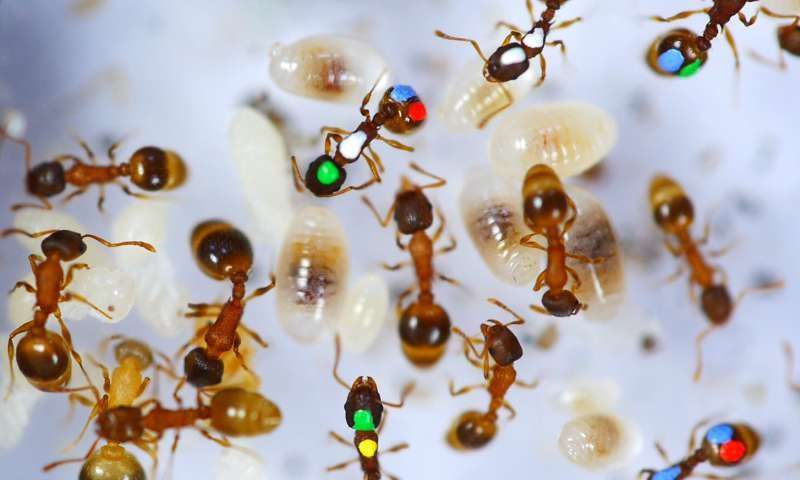About 40% of "worker" ants just hang around, doing nothing
Ants are cultural signifiers of busy industriousness, but a new paper in Plos One reveals that, across species, about 40% of "worker" ants spend most of their days doing nothing.
The researchers hypothesize that the "lazy" ants form both a reservoir of genetic material and a reserve workforce that serves as a hedge against the death of the "productive" ants. They may also serve as an emergency food supply for hard, cannibalistic times.
Analyzing the video recordings revealed that a colony breaks down into four main demographics, according to Charbonneau: inactive, lazy ants; so-called walkers that spend most of their time just wandering around the nest; foragers that take care of outside tasks such as foraging and building protective walls from tiny rocks; and nurses in charge of rearing the brood. Charbonneau observed that the lazy ants tend to have more distended abdomens, hinting at the possibility that they could serve as "living pantries." Published in another recent paper, this observation awaits further testing to determine whether their larger circumference is a cause or a consequence of the lazier workers' lifestyle. To see what would happen if the colony lost sizable amounts of inactive members, Charbonneau and Dornhaus did a separate experiment in which they removed the least active 20 percent. They found that those ants, unlike their top-performing peers, were not replaced.
Who needs ‘lazy’ workers? Inactive workers act as a ‘reserve’ labor force replacing active workers, but inactive workers are not replaced when they are removed [Daniel Charbonneau, Takao Sasaki and Anna Dornhaus/Plos One]
Lazy ants make themselves useful in unexpected ways [Physorg]

qtrhorseluvr on September 17th, 2017 at 05:18 UTC »
This will probably get buried, but I actually work in Dr Dornhaus' lab at the University of Arizona! If enough people are interested I'm sure I could convince her to do an AMA about this topic. It's actually a really interesting field.
Edit: I just emailed Dr Dornhaus about the possibility of an AMA. I'll keep y'all posted.
lionhart280 on September 17th, 2017 at 03:28 UTC »
An example of a species taking this to the extreme is the False Honey Pot ant, Prenolepsis Imparis.
The 'lazy' ants are engorged with food until their abdomen is swollen to several orders of magnitude inside, full of a honey like mix.
Later during winter these act as semi mobile food reserves for the colony!
Edit: Actually there are several distinct species, some belonging to totally different genus, all of which are referred to as part of the honeypot family.
https://en.wikipedia.org/wiki/Honeypot_ant
Looks like "Replete" is the technical term for the worker's that have this designated job, cool!
OccamsRazer on September 17th, 2017 at 00:12 UTC »
Are the lazy ants the same ones all the time? I'd be curious if they were only lazy sometimes.